
Explore the Ancient Mystique of the Bronze Age Monolith
Visit the Bronze Age Monolith in Dundalk, a historic landmark that reveals the ancient stories of Ireland's past amidst stunning natural beauty.
Discover the Bronze Age Monolith in Dundalk, a remarkable historical landmark that offers a glimpse into Ireland's ancient past. This towering structure, steeped in history, stands as a testament to the ingenuity of early civilizations. Visitors can marvel at its grandeur and ponder the mysteries surrounding its origin and purpose, making it a must-visit for history enthusiasts and curious travelers alike. The site is easily accessible and invites you to immerse yourself in the rich cultural heritage of the region.
A brief summary to Bronze Age Monolith
- Dundalk, Mount Avenue, Co. Louth, IE
Local tips
- Visit during early morning or late afternoon for fewer crowds and better lighting for photography.
- Bring comfortable walking shoes, as the terrain can be uneven around the monolith.
- Consider reading about the Bronze Age before your visit to enhance your understanding and appreciation of the site.
- Check local weather conditions ahead of time, as the area can be windy and chilly, even in summer.
Getting There
-
Car
If you're traveling by car, head towards Dundalk. Use the M1 motorway and take the exit towards Dundalk South. Continue on the R132 and follow signs for the town center. Once in the town, use your GPS to navigate to Mount Avenue, where the Bronze Age Monolith is located. There is free parking available along the street near the monolith.
-
Public Transportation
If you are using public transportation, you can take a bus to Dundalk from any major town in County Louth. Check with local bus services for schedules. Once you arrive at the Dundalk bus station, you can either walk to Mount Avenue (approximately 15-20 minutes) or take a local taxi. If walking, head south on the Dublin Road, turn left onto the R132, and continue straight until you reach Mount Avenue. The Bronze Age Monolith will be visible in the area.
-
Taxi
For a more direct route, consider taking a taxi from your location in County Louth to Mount Avenue, Dundalk. Taxi services are available in most towns and can take you directly to the Bronze Age Monolith. Make sure to confirm the fare with the driver before the journey.
Discover more about Bronze Age Monolith
Iconic landmarks you can’t miss
Bronze Age Monolith
0.0 km
Visit the Bronze Age Monolith in Dundalk, a historic landmark that reveals the ancient stories of Ireland's past amidst stunning natural beauty.
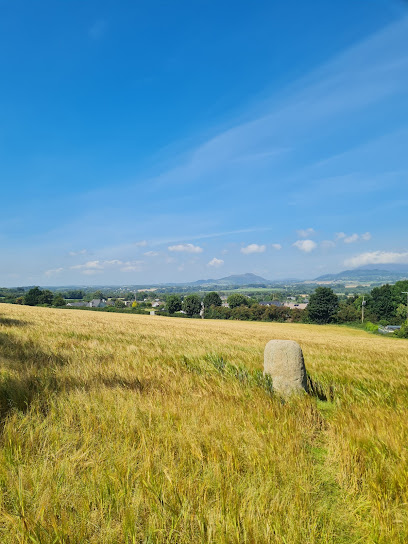
Maid of Erin
2.1 km
Explore the Maid of Erin, a historical landmark in Dundalk, County Louth, and immerse yourself in Ireland's rich cultural heritage.

Kelly's Monument
2.3 km
Discover the rich history and captivating charm of Kelly's Monument in Dundalk, a must-see landmark for every traveler exploring County Louth.

Heritage Site : Dundalk Workhouse Graveyard
3.7 km
Explore the Dundalk Workhouse Graveyard, a haunting reminder of Ireland's Great Famine and its impact on local communities.
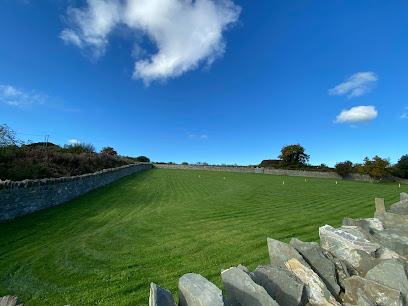
Proleek Wedge Tomb
5.9 km
Explore the ancient Proleek Wedge Tomb in Co. Louth, Ireland - a stunning historical landmark steeped in Neolithic history and surrounded by breathtaking scenery.

Dunmahon Castle
6.3 km
Explore the rich history and enchanting beauty of Dunmahon Castle in County Louth, Ireland, a must-visit for lovers of medieval architecture.

Ballykeel Dolmen (State Care Monument)
13.4 km
Explore the ancient Ballykeel Dolmen, a stunning Neolithic monument nestled in the picturesque landscape of Mullaghbawn, Ireland.
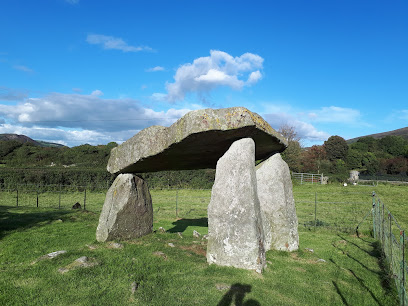
Roodstown Castle
16.2 km
Explore Roodstown Castle, a historical gem in County Louth, where Ireland's rich history meets breathtaking natural beauty.

East Coast Adventure at Rostrevor Mountain Lodge, Mourne Mountains, Self Catering ensuite accommodation
20.3 km
Experience the thrill of adventure and the beauty of nature at East Coast Adventure, your gateway to the Mourne Mountains.

Monaghans cross
23.9 km
Explore Monaghans Cross, a historic landmark in Co. Monaghan, Ireland, surrounded by breathtaking landscapes and rich cultural heritage.

Historical Archeological Site
25.4 km
Explore Drumshallon, a captivating historical archeological site in Co. Louth, where Ireland's rich past comes to life amidst serene landscapes.

Spelga Reservoir
29.9 km
Experience the serene beauty and outdoor adventures at Spelga Reservoir, a hidden gem nestled in the Mourne Mountains of Northern Ireland.

Mellifont Abbey gate house
30.2 km
Explore the historical elegance of Mellifont Abbey Gate House, Ireland's first Cistercian monastery, nestled in the serene County Louth countryside.

Moolieve Mountain
31.2 km
Discover the breathtaking beauty of Moolieve Mountain, a must-visit hiking area near Newry offering stunning views and diverse trails for every adventurer.

Townley Hall Woods
32.0 km
Experience the serene beauty and rich history of Townley Hall Woods, a stunning national forest in County Louth, perfect for nature lovers and outdoor adventures.

Unmissable attractions to see
Heart Space Statue
1.9 km
Explore the Heart Space Statue in Dundalk, Co. Louth - a stunning symbol of creativity and community artistry in a beautiful park setting.

County Museum Dundalk
2.4 km
Explore the cultural heart of County Louth at County Museum Dundalk, where history and heritage come to life through engaging exhibits.
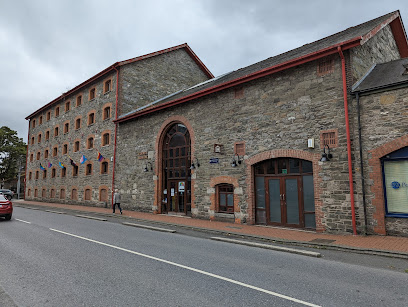
Fish Column
2.5 km
Explore the Fish Column at Táin Bridge in Dundalk, a stunning tribute to the rich maritime history of Co. Louth, Ireland.
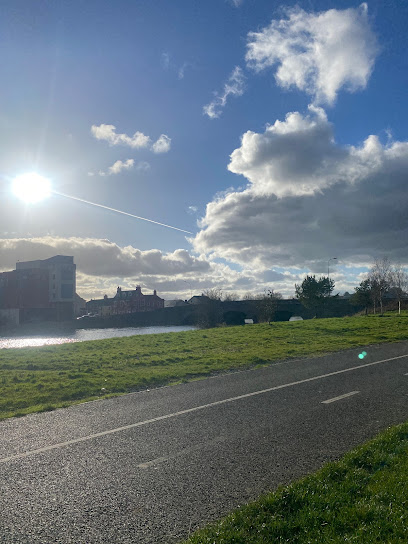
Ladywell Shrine
2.9 km
Explore Ladywell Shrine, a tranquil historical landmark in Dundalk, rich in history and surrounded by stunning natural beauty.

Grave of King Edward Bruce - Last High King of Ireland
5.1 km
Explore the serene resting place of King Edward Bruce, the last High King of Ireland, and delve into the rich history of this historic site in Co. Louth.

Castle Roche
5.3 km
Discover the medieval charm and stunning views at Castle Roche, a historic gem in County Louth, Ireland, perfect for history lovers and adventurers alike.
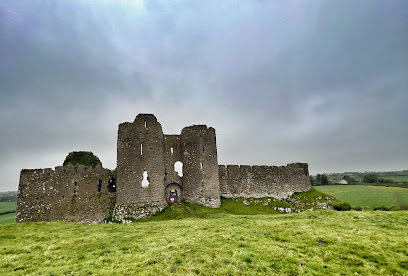
Proleek Dolmen
5.9 km
Discover the ancient wonders of Proleek Dolmen, a mesmerizing historical landmark in County Louth, Ireland, set against stunning natural beauty.
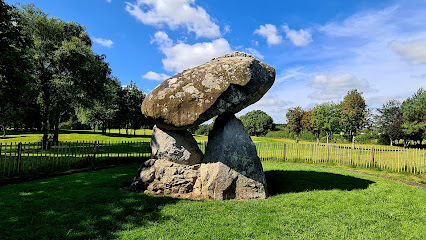
Stephenstown Pond
6.0 km
Experience the tranquility of Stephenstown Pond, a scenic park in Dundalk, Co. Louth, ideal for fishing, walking, and enjoying nature's beauty.

Swinging bridge
6.8 km
Experience the thrill of the Swinging Bridge in Stephenstown, Co. Louth, where adventure meets breathtaking natural beauty.

BlackRock promenade , with outstanding views of mountains and coastal views
6.8 km
Explore the scenic BlackRock Promenade, a picturesque coastal walk with stunning views of mountains and the shimmering sea in Co. Louth, Ireland.

Blackrock Beach
7.2 km
Experience the beauty and tranquility of Blackrock Beach in County Louth, a perfect destination for relaxation, recreation, and exploration along the Irish coast.

Dromiskin Monastic Site
10.5 km
Uncover the ancient monastic heritage at Dromiskin Monastic Site, a historic landmark in Co. Louth, Ireland, perfect for history lovers and tranquil escapes.

Slieve Gullion Forest Park
10.8 km
Explore the beauty of nature at Slieve Gullion Forest Park, a stunning outdoor escape in Northern Ireland perfect for adventure and relaxation.

Long Womans Grave
11.4 km
Discover the captivating Long Woman's Grave in Co. Louth, where ancient legends meet stunning landscapes in a historic Irish landmark.

The Foxes Rock
12.3 km
Explore The Foxes Rock in Co. Louth – a breathtaking hiking area with stunning views and serene nature trails perfect for every adventurer.

Essential places to dine
The Lisdoo Bar & Restaurant
1.9 km
Experience the perfect blend of tradition and modernity at The Lisdoo Bar & Restaurant in Dundalk – where culinary excellence meets warm Irish hospitality.

The Spotted Dog
2.0 km
Discover authentic Irish flavors at The Spotted Dog in Dundalk - where local ingredients meet culinary excellence.

Nonna Nenne'
2.0 km
Experience authentic Italian cuisine at Nonna Nenne', where every dish is crafted with love and tradition in Dundalk.

Proleek Restaurant
5.3 km
Experience the finest local cuisine at Proleek Restaurant in Co. Louth – where gourmet meets tradition amidst breathtaking landscapes.

Fitzpatrick's Bar & Restaurant
8.9 km
Experience mouthwatering grill dishes and warm hospitality at Fitzpatrick's Bar & Restaurant in Jenkinstown.

Diamonds Restaurant
14.9 km
Discover family-friendly dining at Diamonds Restaurant in Warrenpoint, offering delectable breakfast and modern European cuisine in a cozy atmosphere.

The View Restaurant
14.9 km
Discover culinary excellence at The View Restaurant in Warrenpoint - where authentic Irish dishes meet breathtaking landscapes.

Raymie's Seafood Bar & Grill
15.0 km
Savor fresh seafood and succulent steaks at Raymie's Seafood Bar & Grill in Warrenpoint – where every meal is a coastal delight!

Killowen Bar
17.9 km
Discover the heart of Rostrevor at Killowen Bar - where traditional Irish hospitality meets delightful cuisine in a cozy atmosphere.
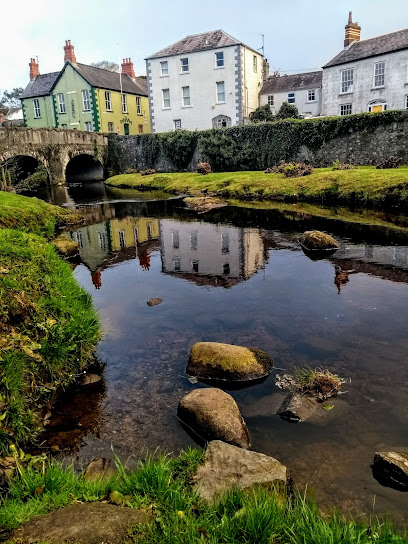
The Rostrevor Inn
17.9 km
Discover authentic Irish hospitality at The Rostrevor Inn - where traditional pub culture meets cozy bed & breakfast comfort in stunning surroundings.

Kilbroney Bar
18.0 km
Discover Kilbroney Bar: A cozy bar & grill in Rostrevor offering delicious food and drinks amid stunning Northern Ireland scenery.

The Old School House Cafe
18.1 km
Discover delectable dishes at The Old School House Cafe in Rostrevor - where local flavors meet cozy ambiance.

Myrtle Bistro
18.7 km
Discover Myrtle Bistro: A Culinary Gem in Ardee Serving Authentic Irish Cuisine with Local Ingredients.
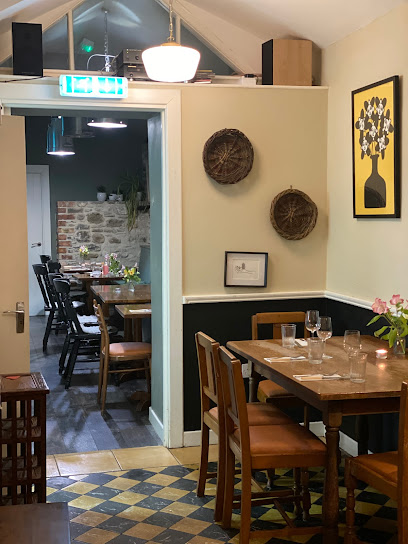
The Oak Tree Restaurant Mayobridge Golf Club
23.4 km
Discover exceptional steak dining with stunning views at The Oak Tree Restaurant in Mayobridge Golf Club.

Minny Doyles
27.3 km
Experience exceptional continental cuisine and vibrant nightlife at Minny Doyles in Hilltown - where every meal is a celebration.

Markets, malls and hidden boutiques
Carroll Village Shopping Centre
1.8 km
Discover the charm of Carroll Village Shopping Centre in Dundalk, where shopping meets dining in a vibrant atmosphere perfect for tourists.

SARA Boutique
1.8 km
Explore SARA Boutique in Dundalk for fashionable women's clothing and unique styles in a welcoming shopping environment.

LongWalk Shopping Centre
1.8 km
Explore LongWalk Shopping Centre in Dundalk for a unique shopping experience with diverse stores, delightful dining, and vibrant community events.

Ozone Boutique
1.9 km
Discover local fashion at Ozone Boutique, Dundalk's premier clothing store offering unique styles and personalized service.

Gift and Art Gallery
2.0 km
Discover locally crafted treasures at the Gift and Art Gallery in Dundalk, where art meets culture in a vibrant shopping experience.
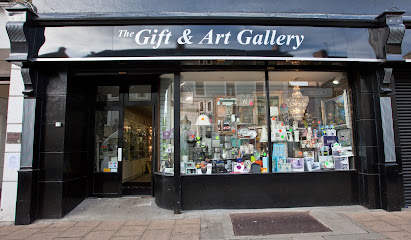
Sheba Boutique
2.0 km
Explore Sheba Boutique in Dundalk for unique fashion and home decor items that capture the essence of Irish style and creativity.

Bumbles for Kids
2.0 km
Discover stylish and comfortable children's clothing at Bumbles for Kids in Dundalk, where quality meets fashion for your little ones!

Regatta Great Outdoors Dundalk
2.0 km
Shop at Regatta Great Outdoors Dundalk for stylish and functional outdoor clothing, perfect for exploring Ireland's breathtaking landscapes.

Elmay Boutique
2.0 km
Explore Elmay Boutique in Dundalk for unique fashion finds and personalized service in a cozy shopping environment.

McEvoys Department Store
2.0 km
Discover the ultimate shopping experience at McEvoys Department Store in Dundalk, offering everything from clothing to home essentials in one convenient location.
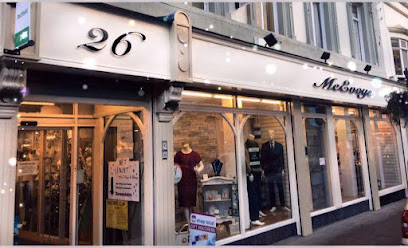
Ruby Nu Boutique
2.1 km
Discover the latest women's fashion trends at Ruby Nu Boutique in Dundalk, where style meets affordability in a chic shopping experience.

Michael Smyth's
2.2 km
Explore the unique charm of Michael Smyth's gift shop in Dundalk, offering a myriad of handcrafted treasures and local artisan finds.
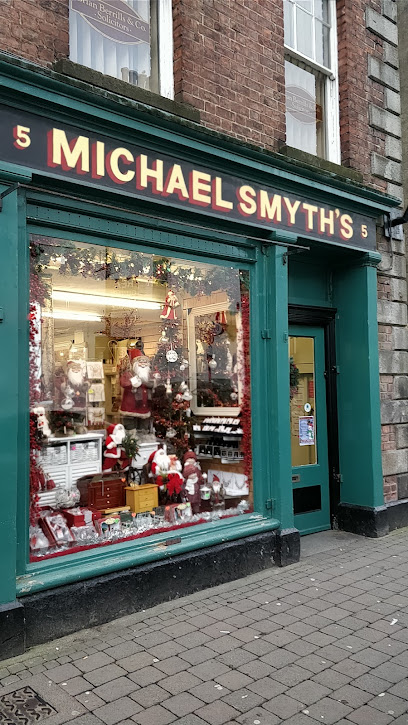
Marshes Shopping Centre
2.6 km
Discover a shopping paradise at the Marshes Shopping Centre, featuring diverse shops, delicious dining options, and a vibrant atmosphere in Dundalk.
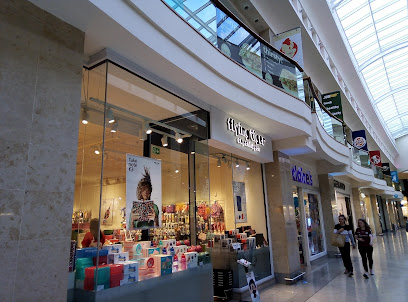
Home Store + More
4.3 km
Explore Home Store + More in Dundalk for a diverse selection of affordable home goods, perfect for enhancing your living space or finding the ideal gift.

Dundalk Retail Park
4.3 km
Discover the ultimate shopping experience at Dundalk Retail Park, featuring a wide variety of stores and delightful dining options in Co. Louth.

Essential bars & hidden hideouts
BODHRAN Bar
1.8 km
Discover the essence of Irish culture at BODHRAN Bar in Dundalk, where lively atmosphere meets exceptional local brews.

The Bartender
2.2 km
Experience the charm of The Bartender in Dundalk, where Irish hospitality meets lively atmosphere and an impressive drink selection.

Micheal McCourt
2.2 km
Discover the vibrant atmosphere and extensive drink selection at Micheal McCourt Pub in Dundalk, where Irish hospitality meets local charm.

The Rum House
2.2 km
Experience the vibrant nightlife at The Rum House, Dundalk's premier cocktail bar serving exquisite drinks in a stylish atmosphere.

Windsor Bar and Restaurant
2.3 km
Experience the best of Dundalk at Windsor Bar and Restaurant, where local flavors and a welcoming atmosphere come together.

The Malt House
3.2 km
Experience authentic Irish hospitality at The Malt House, a beloved pub and restaurant in the heart of Dundalk offering hearty meals and a vibrant atmosphere.
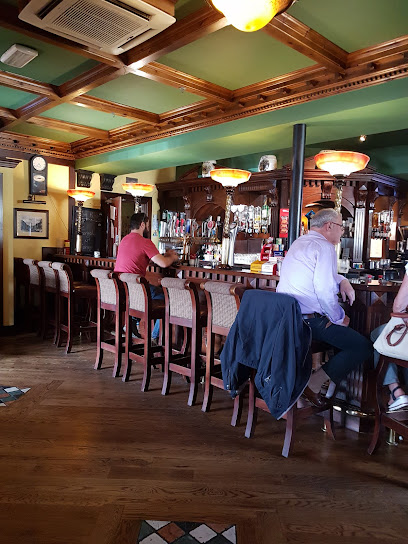
Mac Namees Bar
6.1 km
Discover the heart of Irish culture at Mac Namees Bar in Knockbridge, where warmth, tradition, and great food await every visitor.

Bayview Inn
7.2 km
Experience the warmth and charm of Bayview Inn, a cozy bar in Blackrock, Co. Louth, where local hospitality meets scenic beauty.
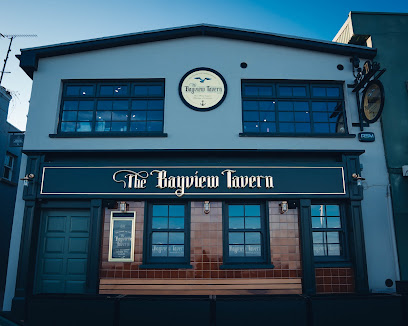
The Stone House
7.2 km
Discover the warm hospitality and vibrant atmosphere of The Stone House in Haggardstown, the perfect spot for relaxation and local culture.

Lumpers Bar
7.4 km
Discover the charm of Lumpers Bar in Ravensdale, a cozy pub offering a delightful selection of drinks and traditional Irish cuisine.

Eamo's Bar
10.1 km
Discover the charm of Eamo's Bar in Louth, a lively spot for drinks, live music, and a taste of authentic Irish hospitality.

Sarks' Bar
10.2 km
Experience the warm ambiance and diverse drink selection at Sarks' Bar, a beloved local spot in Louth, perfect for unwinding and socializing.

McCooey's Bar
10.2 km
Discover the heart of Louth Village at McCooey's Bar, where friendly service and authentic Irish charm await every visitor.

Glyde Inn
10.7 km
Discover the warm hospitality and vibrant atmosphere of Glyde Inn, a charming bar in Christianstown, Co. Louth, where community and tradition meet.

Joe's Bar
12.2 km
Discover the heart of Gilbertstown at Joe's Bar, where local culture meets a cozy atmosphere and delightful drinks.




